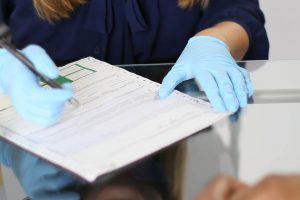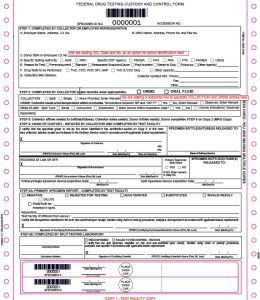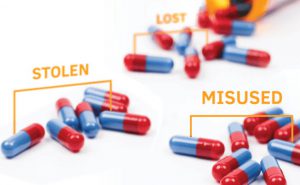The Drug and Alcohol Testing Industry Association (DATIA) publishes a quarterly magazine. In their recent Summer issue, DATIA ran an article written by Quest Diagnostics called Data-driven Insights: From Six Months of HHS/DOT Mandatory Guidelines & Panel Changes. You can read the article below.
On October 1, 2010, the Department of Health & Human Services’ (HHS) new Mandatory Guidelines, and corresponding Department of Transportation (DOT) 49 CFR Part 40 Rules took affect. With this change, MDMA (Ecstasy) and 6-Acetylmorphine (Heroin-specific metabolite) became required screens in regulated panels. Additionally, the screening and confirmation cutoffs for cocaine and amphetamines were lowered.
To comply with these new requirements, Substance Abuse and Mental Health Services (SAMHSA) certified laboratories were required to automatically begin testing all specimens collected under HHS/DOT covered programs to the new panel on October 1, 2010. Non-Federally mandated clients could elect to opt into the new panel if they desired to have their program continue to match the Federal standards. While Quest Diagnostics is seeing more non-Federally mandated clients elect to opt-in, the data and trends discussed below are solely from DOT regulated results and represent Quest Diagnostics’ findings from the first six months of testing between the dates of October 1, 2010 and March 31, 2011.
As part of the regulatory changes, the cutoff levels were lowered for urine drug tests for cocaine metabolite and amphetamines. This change made the testing more sensitive, and thus it’s not surprising that we are seeing increased
positivity for these testing groups. In the first 180 days of testing, cocaine positivity is up 38% and the positivity for
amphetamines is up 43% as compared to the same time period one-year prior.
The additional test for MDMA has yielded a positivity rate (0.004%), which is within the range expected, based on historical non-regulated testing data. The test for 6-AM has provided a couple of intriguing observations. First,
we are finding more positive test results than expected for 6-AM (0.011%), and second, a number of the confirmed
positive tests for 6-AM are not testing positive for morphine, leading us to believe that this test may be detecting
more heroin use than previously suspected. Consequently, it appears that the separate screening test for 6-AM is proving effective at detecting more heroin users.
By broadening the required screens in regulated panels and lowering the cutoffs for others, the HHS/DOT was
clearly attempting to expose drug use that was otherwise going undetected. Correspondingly, by examining the
results from more than seven hundred thousand (700,000) DOT mandated urine drug tests over the first six months
of the new requirements, we can clearly see that positive prevalence rates have increased.
For more information about drug testing, visit our website.
R. H. Barry Sample, Ph.D., is Director of Science and Technology for the Employer Solutions Business of Quest Diagnostics. Dr. Sample is responsible for the production and introduction of new products and services through new test, informatics, and technology development.
Aaron Atkinson, MBA, is the Marketing Product Manager for the Employer Solutions Business of Quest Diagnostics. He is responsible for market research, planning and communication efforts.




















The Drug and Alcohol Testing Industry Association (DATIA) publishes a quarterly magazine. In their recent Summer issue, DATIA ran an article written by Quest Diagnostics called Data-driven Insights: From Six Months of HHS/DOT Mandatory Guidelines & Panel Changes. You can read the article below.
On October 1, 2010, the Department of Health & Human Services’ (HHS) new Mandatory Guidelines, and corresponding Department of Transportation (DOT) 49 CFR Part 40 Rules took affect. With this change, MDMA (Ecstasy) and 6-Acetylmorphine (Heroin-specific metabolite) became required screens in regulated panels. Additionally, the screening and confirmation cutoffs for cocaine and amphetamines were lowered.
To comply with these new requirements, Substance Abuse and Mental Health Services (SAMHSA) certified laboratories were required to automatically begin testing all specimens collected under HHS/DOT covered programs to the new panel on October 1, 2010. Non-Federally mandated clients could elect to opt into the new panel if they desired to have their program continue to match the Federal standards. While Quest Diagnostics is seeing more non-Federally mandated clients elect to opt-in, the data and trends discussed below are solely from DOT regulated results and represent Quest Diagnostics’ findings from the first six months of testing between the dates of October 1, 2010 and March 31, 2011.
As part of the regulatory changes, the cutoff levels were lowered for urine drug tests for cocaine metabolite and amphetamines. This change made the testing more sensitive, and thus it’s not surprising that we are seeing increased
positivity for these testing groups. In the first 180 days of testing, cocaine positivity is up 38% and the positivity for
amphetamines is up 43% as compared to the same time period one-year prior.
The additional test for MDMA has yielded a positivity rate (0.004%), which is within the range expected, based on historical non-regulated testing data. The test for 6-AM has provided a couple of intriguing observations. First,
we are finding more positive test results than expected for 6-AM (0.011%), and second, a number of the confirmed
positive tests for 6-AM are not testing positive for morphine, leading us to believe that this test may be detecting
more heroin use than previously suspected. Consequently, it appears that the separate screening test for 6-AM is proving effective at detecting more heroin users.
By broadening the required screens in regulated panels and lowering the cutoffs for others, the HHS/DOT was
clearly attempting to expose drug use that was otherwise going undetected. Correspondingly, by examining the
results from more than seven hundred thousand (700,000) DOT mandated urine drug tests over the first six months
of the new requirements, we can clearly see that positive prevalence rates have increased.
For more information about drug testing, visit our website.
R. H. Barry Sample, Ph.D., is Director of Science and Technology for the Employer Solutions Business of Quest Diagnostics. Dr. Sample is responsible for the production and introduction of new products and services through new test, informatics, and technology development.
Aaron Atkinson, MBA, is the Marketing Product Manager for the Employer Solutions Business of Quest Diagnostics. He is responsible for market research, planning and communication efforts.